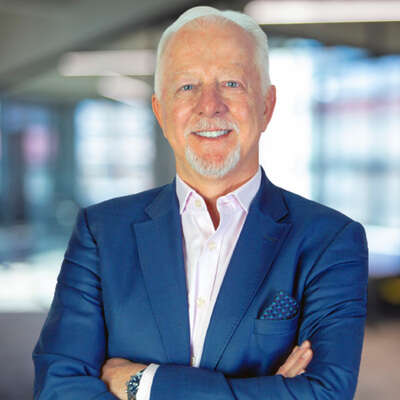Artículos y ensayos
People, Planet & Profit: The Evolving Sustainability Leader, Part II
Perspectives from Boyden’s Industrial Practice Group Experts
ESG mandates, stricter regulations, market forces and other factors are pushing sustainability to the top of the corporate agenda. Sustainability strategies and plans for executing them have become business imperatives – making the head of sustainability one of the most in-demand functions.
In the industrial sector, the need to deliver on both sustainability and profitability goals, and identify opportunities within this new environment, is prompting executive teams to re-examine their talent requirements and look beyond their industries. Against the backdrop of unprecedented challenges, a different type of leader is emerging, gaining more importance and wielding more influence.
Exploring the issue further, we share the expert opinions of Boyden's Industrial Practice subsector leaders from across the globe: Jan Gustafsson (Industrial Manufacturing), Elizabeth Garforth (Aerospace & Defense), Paul Marshall (Aerospace & Defense), Catherine Van Alstine (Mining & Primary Materials), and Neil Morrison (Supply Chain & Logistics).
In conversation with Boyden’s Global Industrial Practice Leader, Helga Kayser-Dörr, the group examines the shifts taking place within several sectors as companies move to implement sustainability measures and secure effective sustainability leaders.

Kayser-Dörr: What elements of sustainability, in terms of economic, environmental or social approaches, are of particular focus in your sectors?
Gustafsson (Industrial Manufacturing): From an owner’s point of view, ESG maturity and reputation are critical components of company valuation. Clear ESG target-setting and transparent reporting have strong positive influence on reputation. In fact, having a clearly stated ESG vision for the company, tangible targets derived from the vision, and direct impact of the ESG targets on executive compensation and rewards builds a credible backbone for the company’s ESG reputation. Solid leadership culture with commitment to ESG targets supports the execution, starting at the board level.
Morrison (Supply Chain & Logistics): Across the sector, the focus is on helping to reduce the carbon footprint. Companies are seeking to align supply chain operations through sustainable activities, those closer to net zero emissions being more favourable, while balancing out economic benefits. There has been a movement for local sourcing as a result, some of which can also be attributed to pandemic-related disruption. Also, more than ever, organisations are paying more attention to their supplier procurement and sourcing-related actions, making traceability and transparency critical factors.
Kayser-Dörr: What triggers are demanding and driving action?
Garforth (Aerospace & Defense): With a new generation of clients and customers who are more informed on environmental issues and demanding solutions to address the climate emergency, corporations need to respond. Environmental certification is becoming increasingly important, and governments are imposing more regulations on ESG issues.
The aerospace and defence sector makes no exception, and while commercial aviation is expected to grow substantially, the industry is developing at a faster pace. New and innovative aircraft technology related to electric, hydrogen and news forms of propulsion, as well as streamlined flight operations, increased production and deployment of sustainable aviation fuels are set to deliver exceptional gains in environmental performance and reach the 2050 net zero emission target.
Van Alstine (Mining & Primary Materials): Sustainability is a corporate imperative. The drivers behind this are twofold: First, investors at both the institutional and retail level are making investment decisions based on the company’s ability to demonstrate that they not only have an ESG strategy, but that their operational and planning decisions support their stated ESG values, goals and objectives. In the mining sector, a commitment to environmental sustainability and indigenous and community engagement are at the top of list. Secondly the recruitment and retention of high-calibre staff is directly related to the values a company espouses. The next generation of leaders will only work for companies where there is alignment on values.

Kayser-Dörr: What does all this mean for talent? From your perspective, where are the biggest gaps?
Marshall (Aerospace & Defense): It will be imperative for executives to have an in-depth understanding of ESG and its implications on strategy development. Furthermore, from a talent attraction standpoint, ESG communication strategies will be of critical importance in securing top talent. Candidates will want to know where an organization stands on these matters and how they are being addressed throughout the organization and not only in the C-suite.
Gustafsson (Industrial Manufacturing): An ESG focus should be visible in the board composition as well as in the skills and background of key executives. Boards and executive teams with diverse backgrounds and strong command of critical environmental, social and governance topics can ensure the execution of relevant development programs, lead fluent dialogues with external ESG stakeholders, and build a strong positive reputation for the company. Currently there seems to be high demand for senior talent with business leadership experience and deep understanding of social dimensions of the corporate responsibility agenda.
Kayser-Dörr: For companies that have yet to implement sustainability work streams or appoint a sustainability leader, what barriers have you observed?
Morrison (Supply Chain & Logistics): A clear sustainability strategy with stated and measurable objectives that dovetails with the corporate vision is critical. Without this and buy-in at the senior management, stakeholder and shareholder levels, the success of a sustainability leader will be in question.
Garforth (Aerospace & Defense): Shifting business practices to be more environmentally friendly can be expensive, at least in up-front costs, which can make businesses reluctant to implement sustainability work streams. It is easier to calculate savings from buying renewable energy than to correctly calculate the value and benefits of managing environmental sustainability. Companies can also miss the impacts on financial performance if the sustainability strategy is not fully integrated into the long-term business strategy.
There are also barriers when the sustainability leader is not at the right decision-making level in the organization and cannot offer insight and act as a catalyst for change. There can also be friction when the goals of sustainability teams are not aligned with corporate governance priorities. Companies need to clearly define the necessary core competencies, skills and leadership attributes of the sustainability leader, and determine how this individual will be crucial in implementing the ESG strategies.

Kayser-Dörr: What are the key objectives of the head of sustainability role?
Van Alstine (Mining & Primary Materials): The head of sustainably in a mining organization is responsible for developing and executing strategies to ensure the organization is operating and innovating in ways that give it social licence to operate. Planning around issues related to energy use, resource conservation, pollution reduction, waste elimination, environmental protection, indigenous and community relations are at the forefront of their mandate. The head of sustainability is also responsible for developing methodologies to assess the viability or success of sustainability initiatives and compliance with environmental and governmental regulations.
Gustafsson (Industrial Manufacturing): The head of sustainability creates and supports the commitment of the whole organization towards the company’s sustainability agenda. They have the responsibility of company-wide sustainability development, which includes supporting, following up and communicating the progress of set sustainability targets. It also involves creating a positive and proactive discussion agenda and communication around sustainability for different stakeholders, including current and potential investors.
Kayser-Dörr: To build on that, what is the ideal profile to meet these objectives?
Morrison (Supply Chain & Logistics): Vision, credibility, a proven track record, gravitas, communication skills, enthusiasm and empathy. A solid understanding of the industry is useful; however an interim executive with a breadth of experience across multiple sectors should not be discounted. Possessing business and technical knowledge with a strong focus on vision connects the ESG leader to their core purpose, but the ability to motivate, influence and inspire is key.

Kayser-Dörr: The role of the chief sustainability officer is being shaped mostly by Fortune 500 companies. How is this role different in other organisations?
Garforth (Aerospace & Defense): The demand and importance of the position have grown to what is now a C-level executive role. The position of CSO has not been standardized across industries, so each industry's expectations and needs for a CSO will be different.
Fortune 500 companies will appoint a CSO at the C-suite level with a central support function. Some organizations will appoint a sustainability leader two or more levels below the C-suite, which means they lack direct decision-making ability and boardroom access to influence and support a sustainability agenda. Others will combine that mandate with another function. This lack of focus and ability to influence will make transformation and integration a challenge. Progress with lag.
When it comes to smaller organizations, there is unique opportunity. Done right, an ESG-focused leader can lead more engaging and in-depth initiatives, act on decisions faster, and ensure the company walks the walk. Due to their smaller size, they can be more agile and see outcomes faster.
Kayser-Dörr: What is the future of the head of sustainability role?
Marshall (Aerospace & Defense): Sustainability will continue to take on an increasingly important role in the C-suite. While the head of sustainability will be a key driver of an organization’s ESG strategy, it will also be imperative for all executives to play lead roles in developing ESG strategies for their functional areas that are in line with broader enterprise strategies.
Van Alstine (Mining & Primary Materials): Sustainability is top of mind for every CEO and board in respected, world-class mining organizations. The head of sustainably is critical to driving growth and achieving strategic and operational objectives. This is a role that, like others, will morph over time but will continue to be a valued leader at the executive and board level.
Morrison (Supply Chain & Logistics): Sustainability is the future, because without it there is no future. ESG has the possibility to inspire, transform and bring true value at many levels.









